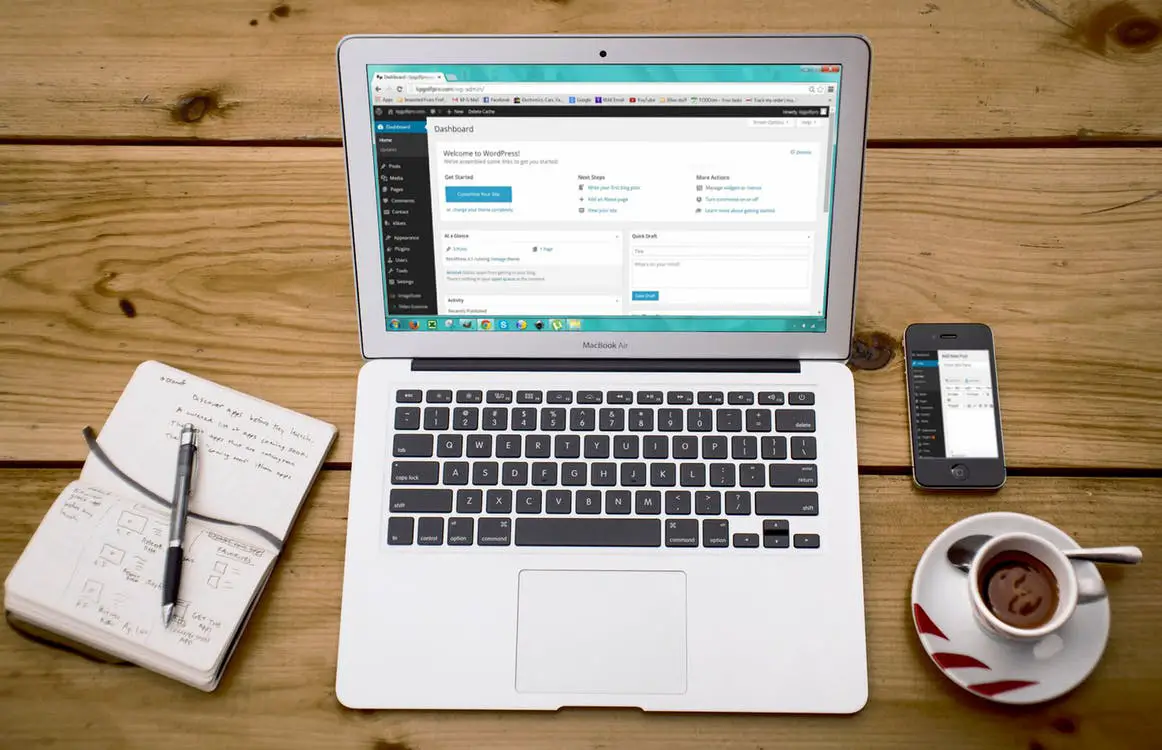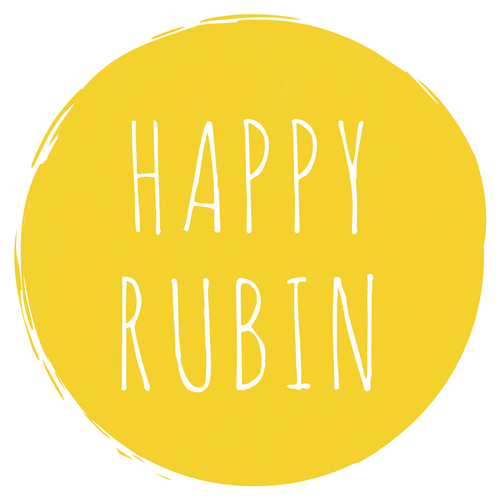![How To Deal With Sensory Overload [9 Tips For Overstimulation]](https://happyrubin.com/wp-content/uploads/2019/12/ik-ben-overprikkeld-150x150.jpg)
Seduce For The Internet? 11 Tips: Write Catchy Web Texts!

Do you want to seduce on the internet and write really good texts for the web ? Here you will find the best writing tips and examples from the best copywriters in the world. Keep your marketing communication texts and apply these tips immediately so that your web texts immediately receive a convincing upgrade.
Contents of this page:
How do you make converting texts? And now the best writing tips for your web texts!
Seductive and commercial writing for your website and / or social media? Below are lessons for your marketing communication. This is the communication in your brochures, business cards, social media, emails and website.
Lesson 1: don’t be cliché, but be unique (work with the unknown)

The brain pays attention to the unknown because our ancestors had to survive in the past: the brain is then alert, and no longer on automatic pilot for the known things. Those things are therefore ignored. How can you respond to that? By not using clichés, but by using surprises and unique aspects of yourself.
What is wrong with the example below from coach A?
“All the people I have been able to help are powerful in their energy and have grown powerfully. The passion returns and they are in the prime of their lives again. Everyone thought I was a great person to work with.”
The above applies to any coach and does not say anything at all. What can you do to improve this?
- Say something no one else can say (competitors).
- Say something (about yourself) that they haven’t heard before.
- Preferably, these matters are easily verifiable and cannot be claimed by competitors.
- Note: many points you find dead normal, but are unknown to customers.
- Literally show the concrete results and make them tangible. What actually happened? “Client x had question y and obstacle z. He was given homework task x, did y and resulted in z.”
- Do n’t be woolly and don’t use ‘marketing language’ (when talking about yourself, for example). So don’t write as a copywriter.
- Say in simple words what is unique about you.
Practical example of company B:
How is company x different?
- Real training location (no hotel rooms).
- Admission requirements for further education: Under no circumstances can students participate without a valid certificate. Elsewhere it is allowed after a little insistence.
- Community and café to meet.
- Training coaches, tutor, student front office, trainers and community coach at your disposal.
- You can find more ways in which company x is different on their homepage.
Lesson 2: Present usage scenarios for your product or service
Usage scenarios are suitable for communicating about unknown products. Then your suspects can imagine how they use it.
Practical example of an NLP training institute:
NLP is ideal in these situations:
- You are sitting at the table with a group of people and you are unable to influence the topic of conversation.
- You try to convince a customer and you fail to make a click.
- There are still 10 minutes to go before your presentation starts and you are (visibly) nervous. Just enough time to apply a series of quick mental techniques that fix this.
- You have to deal with discussions at work on a daily basis and you are looking for tools to control those discussions.
- You wish that every time you sit down at your desk for your bookkeeping, you get as excited as you are when you play a game, which will get you started quickly and finish it quickly.
- You regularly tell stories to your children, friends and at work, and you can use a number of extra ways to make your story more intense, influential and real.
- You are now working as a researcher and you are considering a career shift towards coaching and counseling.
- You are now working as a coach and you do not yet have the result you want or you are looking for more ingenious and effective techniques to add to your arsenal.
- You want to set the goal to convert 200,000.00 with your company and you are looking for tools to realize that.
- You want to get the most out of the negotiations in your organization.
Lesson 3: Create an emotional connection by telling stories (Tell your customers how your sausage is made)

Tell stories! The additional advantage of this is: a story is not an advertisement. People don’t ignore stories like they ignore advertisements (bullshit radar).
- Tell your ‘origin story’: where you come from and what you have been through as a result of which you started doing business.
- Don’t make it a perfect story where you are a great and perfect hero. Don’t play a role and don’t stop nice weather. The perfect picture doesn’t sell. A vulnerable story ensures recognition and connection.
- Note: Show in the story that you have an emotional motivation to do what you do. Otherwise, customers look up to you too much, so that they feel distant and you lose them. It takes away the distance because in our emotions we are all alike.
- Note: the superhero is your customer himself. He just doesn’t feel that way yet: that’s why he needs you. You are their mentor. So don’t let your ego kid you that you are the hero. You’re not Luke Skywalker, you’re Yoda.
- Tip: use primal plots: fixed proven structure as a recipe, which are already preprogrammed in everyone’s brain.
Primal plot 1: underdog, the hero against will and thanks (function: to let your customers see you as a role model, without them looking up to you). This story shows possibilities. This gives inspiration. For example: a protagonist without a special ability is reluctantly pulled into the story and still achieves special things. Difficult circumstances, setbacks, powerful opponents and a great injustice come … The protagonist feels doubts but still overcomes them despite his shortcomings. He’s had a tough life for his time as a hero / you don’t expect him to be a hero beforehand. Example: Frodo receives a ring while playing. Other examples of this original plot are: The matrix, Die hard and The Big Lebowski.
The entrepreneur had to overcome all kinds of things to make this the company it is today. He did not expect the company to be so loved. It turned out a bit like this. This primal plot shows that you stayed normal: you inspire your customers with the successes you have achieved despite everything. This doesn’t have to be big, as long as it’s important to you and you’re amazed that it worked through trial and error. - Primal plot 2: the common enemy. This is the plot of clarity: it’s black and white. The good against the evil. When you fight evil as a protagonist, you immediately have the sympathy of the readers, because evil is a common enemy. The Bodyshop fought against environmental pollution. Did your venture start to make the world a better place or to solve a problem that nobody was doing anything about? Then you fight an enemy that many of your customers recognize.
- Primal plot 3: data story telling while hardly mentioning technical data.
Step 1 – Introduction: telling about the problem
Step 2 – Growing insights: biggest challenge and hints to breakthroughs and process to get started with those hints
Step 3 – Aha moment: the solution, it worked! How did that feel when you realized that?
Step 4 – Solution and the next step: the call to action and the why.
Note: after that you also have to mention specifications and details (so you don’t have to omit the technical terms completely).
Lesson 4: Let Your Texts Bleed – Describe the problem in detail
By writing about problems, you no longer have to write blah-blah texts. In addition, negative motivation works better for most people than positive motivation. In addition, problems attract attention!
Problems are magnified in films, series (cliff hanger) and news. Why? Problems attract attention. Imagine: a cyclist is on the road fast and suddenly sees a friend passing by. The fast-moving cyclist asks: how are you? The cyclist must then really stop when someone says: bad. This is all thanks to the reptilian brain: because of the survival instinct. We cannot resist that: it is the subconscious mind .
- Your audience wants urgency. It really cannot continue like this.
- You show that you understand your customer when you discuss the problem. Think of when you shopped and felt that you were very nice and well helped: the seller showed that he understood you (problem!). Naming the problem is empathy.
- Describe the worst case believable scenario. So without exaggerating.
- Pick and focus on your customers’ most important problem . Briefly mention the other problems.
- Use the most dramatic (not exaggerated) story you have that you have heard from your customers. This is how you use a story based on true facts.
- Or: give your customers a problem. You can use your expertise to make people aware of a problem that they are unaware of (making latent problem manifest). For example Dettol: in their commercial you can see that a cloth is used over the kitchen counter, but all kinds of fish, meat and a football could still be seen through an animation: with just water and a cloth, the bacteria will not go away. Anyone with a countertop has an immediate problem.
- The most painful problems to press are the negative formulations of basic needs. This is so important that it is a marketing communications mistake if you don’t. The second part of the Basic Needs article deals fully with the marketing aspect of the Basic Needs.
Lesson 5: Make your customers emotional – ‘twisting the knife’ (You don’t want a thinking customer but an emotional one)

After you make the customer feel the problem, make them worse. You achieve that with emotions. Also dare to name the consequence that makes the customer emotional, and dare to take the time before you go to the solution. Examples of this can be found at the bottom of the article on basic needs.
Lesson 6: Get your customers’ heart rate down again: There is light at the end of the tunnel
- Only now mention the benefits and USPs. This is already the case with your competitors, but you have done it differently now. You are only now naming them! Take a look at any competitor and you will probably find something like the text below: ‘Smart selling with a well thought-out strategy for every home’. This does nothing to the subconscious, the instinct and the feeling (see previous lessons).
- An example that is striking:
Erasmus Medical Center Rotterdam: ‘Pain in your mouth? 24/7 emergency care for dental and dental problems. ‘ If it had only said: ’24/7 emergency care for teeth and dental problems’, it would not have been striking. - So: first raise the heart rate (previous lessons) and then bring the heart rate down again quickly : you reassure the customer. So always make sure you mention something about the solution immediately after you mention the problem, otherwise they will associate your company too much with negativity.
Lesson 7: Then prove it
If you now also use the following things, you are irresistible:
- Testimonials
- Figure
- Demo’s
- Hallmarks and awards
- You can also set up awards yourself: there were international NLP awards in 2017. If you set up something like this, it will get you a lot of backlinks because everyone points their followers to the voting page.
Lesson 8: Good sales texts refute all objections
- Also know all possible prejudices.
- Above all, remove the monetary objections with the following arguments:
– The savings are greater than investments
– The returns are greater than investments
– This ensures demonstrable improvements in relationships and health - Prove these matters too, preferably with the shortest possible payback period.
- Give them a reputation to live up to so that their self-persona changes. Think of the World Cup 2006 in Germany: the news was circulated that the English supporters are the best supporters in the world and that they are world champions in partying. This saved a lot of trouble: the World Cup went smoothly without destruction by the English supporters, who were normally known for this. Ask yourself: how do you turn tea drinkers into coffee drinkers?
Lesson 9: Write as if you were talking to a friend

- Write in colloquial language, so as you speak.
- Don’t write sentences you wouldn’t say.
- In that regard, do the opposite of the competition. For example, use simpler or more elegant words if the competitors all do one thing. You can do the same with the you-shape with respect to the u-shape, visual with respect to abstract, more humorous with respect to dry, etc.
- Expose yourself. So provide personal information, photos and videos and be enthusiastic about your product.
- Keep it low-threshold in terms of energy and tone: positive (after showing the pain), soft, warm and playful.
Lesson 10: Learn From The Great Youtube Success Stories – Publish Daily
If you clearly choose to become a blogger, look at the difference that makes the difference to the big bloggers and vloggers: they post a video every day .
- So, for example, post an interview with a customer every day (who will then share it).
- Answer viewer questions every day.
Lesson 11: Also do something about the relationship phase after the purchase
- Be unforgettable to your visitors / customers after they have bought something. For example, keep sending them something of value.
- Set up an automation workflow in which you continue to send tips to your customers after someone has become a customer: “Can I offer you anything else?”
- Have a happy ending after the purchase. Turn your thank you page into a party and indicate in detail when which confirmation emails will arrive.
Have fun writing, seducing and selling!

![5 Best Self Care Tips For College Students [#1 Advice]](https://happyrubin.com/wp-content/uploads/2021/09/the-best-self-care-tips-for-college-students-440x264.jpg)
![How To Stick To New Year’s Resolutions: 9 Tips [Smart & Sure Ways]](https://happyrubin.com/wp-content/uploads/2019/12/tips-voor-goede-voornemens-440x264.jpg)
![How To Stop Being So Hard On Yourself [9 Great Tips]](https://happyrubin.com/wp-content/uploads/2019/12/we-moeten-zoveel-van-onszelf-en-anderen-150x150.jpg)

![19 Best Ice Breaker & Get-To-Know-Eachother Games [Fun & Simple]](https://happyrubin.com/wp-content/uploads/2018/02/leukste-ijsbrekers.jpeg)
![Becoming More Social: 41 Tips [Improving Social Skills] [List]](https://happyrubin.com/wp-content/uploads/2018/06/sociale-vaardigheden1.jpeg)
![How to start a conversation with anyone: 15 tips [Making contact]](https://happyrubin.com/wp-content/uploads/2017/08/gesprekstechnieken1.jpeg)
![372 Friend Tag Q&A Questions [Best Friend Quiz]](https://happyrubin.com/wp-content/uploads/2019/05/best-friend-tag-vragen-voorbeelden.jpg)



![Clingy & controlling behavior of partner/date [Extreme examples]](https://happyrubin.com/wp-content/uploads/2020/06/claimerig-gedrag-van-partner-eigenschappen-en-voorbeelden-150x150.jpg)

![How to recognize if a man is in love [Signals & his body language]](https://happyrubin.com/wp-content/uploads/2020/05/verliefd-gedrag-van-mannen-herkennen-150x150.jpg)


![Free will and religion / theology [Verses & Quotes on free will]](https://happyrubin.com/wp-content/uploads/2020/10/religion-on-free-will-quotes-1050x640-1-150x150.jpg)

![Dealing With Setbacks & Hardship [Lessons & Examples]](https://happyrubin.com/wp-content/uploads/2018/11/omgaan-met-tegenslag-tips-hoe-dan.jpeg)
![NLP Agreement Frame: Use these exact sentences [Examples]](https://happyrubin.com/wp-content/uploads/2020/10/agreement-frame-nlp-1125x640-1-440x264.jpeg)
![122 Best Comebacks In Any Situation [Best Examples]](https://happyrubin.com/wp-content/uploads/2020/06/beste-comebacks-technieken-tips-440x264.jpg)
![Using Hypnosis to Stop Smoking [HowTo]](https://happyrubin.com/wp-content/uploads/2020/05/stoppen-met-roken-door-hypnose-150x150.jpg)
![Presuppositions language pattern: meaning & examples [NLP]](https://happyrubin.com/wp-content/uploads/2020/04/wat-zijn-vooronderstellingen-150x150.jpg)
![Peripheral Vision: Meaning & Exercise [Essential Skill]](https://happyrubin.com/wp-content/uploads/2020/04/perifeer-zicht-trainen-tips-150x150.jpg)

![How To Start A Coaching Business [21 Smart Tips]](https://happyrubin.com/wp-content/uploads/2018/11/coachingpraktijk-starten-tips.jpeg)
![How to make dreams come true? [33 tips to realize dreams 100%]](https://happyrubin.com/wp-content/uploads/2018/05/dromen-mijlpalen.jpeg)
![How To Become Rich? 27 Millionaire Tips [Guaranteed To Work]](https://happyrubin.com/wp-content/uploads/2018/01/hoe-kan-ik-rijk-worden.jpeg)
![77 Best Online Marketing Tools [Recommendations] [Also Free]](https://happyrubin.com/wp-content/uploads/2018/08/beste-onlne-marketing-tools-tips.jpeg)
![Complete List Of Virtues & Qualities [Including Explanation]](https://happyrubin.com/wp-content/uploads/2018/12/kernkwaliteiten-uitleg.jpeg)
![Being Attentive: How Do You Do That? [Meaning & 9 Tips]](https://happyrubin.com/wp-content/uploads/2019/05/attent-zijn.jpg)
![Being Conscientious: Meaning Of This Virtue [Explained]](https://happyrubin.com/wp-content/uploads/2018/07/Consciëntieus-persoon.jpg)


![Best Books About Burn-Out [Top 10] [Update 2025]](https://happyrubin.com/wp-content/uploads/2020/06/beste-boeken-over-burnout-lijst-440x264.jpg)
![Best Self-love Books [Top 10] [Update 2025]](https://happyrubin.com/wp-content/uploads/2020/04/beste-boeken-over-zelfliefde-aanraders-440x264.jpg)
![Life changing books: 10 books that change your life [2025 Update]](https://happyrubin.com/wp-content/uploads/2020/03/levensveranderende-boeken-tips-150x150.jpg)
![Top 10 Best Books: Recommendations Per Genre [2025 Update]](https://happyrubin.com/wp-content/uploads/2019/12/best-books-per-genre-150x150.png)
![Best Books On procrastination: Must Reads [List] [2025 Update]](https://happyrubin.com/wp-content/uploads/2019/11/beste-boeken-over-uitstelgedrag-tips-150x150.jpg)
![Joe Dispenza: Events To Attend [2025 & 2026] [All Info]](https://happyrubin.com/wp-content/uploads/2020/02/joe-dispenxa-events-440x264.png)
![Best Online Study Options [Online Education Top List]](https://happyrubin.com/wp-content/uploads/2019/03/best-home-study-options-440x264.png)
![Teachable Review & Experiences 2025 [Bad Online Training Tool?]](https://happyrubin.com/wp-content/uploads/2020/02/Teachable-review-ervaringen-150x150.png)
![Audible Review, Experiences & Special Discount [Scam?]](https://happyrubin.com/wp-content/uploads/2020/01/audible-review-ervaringen-150x150.png)
![Guest Posts Wanted [Free & Always Directly Accepted]](https://happyrubin.com/wp-content/uploads/2019/05/gastbloggen-regels.jpg)
